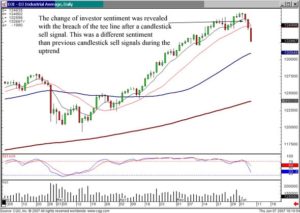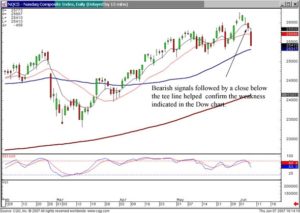It’s a classic saying. Simply put, it says that the proof is the result. It’s the same with investing in the stock market. It is possible to have the best stock trading plan, but the measurement of all your wisdom is found in one place; it all comes down to the bottom line, which is to say earnings per share.
Obviously that statement has a couple of different interpretations. One is the measurement of an investor’s performance; the other is a method of stock technical analysis which can help you to determine if a company’s stock price accurately reflects its worth. Once you are able to determine a stock’s value, you have a better understanding of whether the stock price is high, low or just right. There are a number of sources and techniques for evaluating stocks but it is generally agreed that the best method is earnings per share.
For the typical investor, stock evaluation is based on the company’s earnings. This becomes the central source of information and everything else adds to, or takes away from, the earnings report. Earnings are nothing more than a company’s profit and a reflection of how much money a company made during a certain period. And while it is normal to look for a positive earnings statement, it is not necessarily true that a small or rapidly growing company with negative earnings should be ignored. All technical analysis tools should be kept in their proper context and earnings per share can help to do that.
As can be seen in any given day on the stock market, established companies are expected to have positive earnings. If a giant like General Motors has a low quarter, the stock will likely fall as well unless there is a reason that explains the problem as a one-time event. A new company might go for years with negative earnings and still have favor with the market if investors believe in the future of the company. As a result, actual earnings are linked to expected earnings. Even if a company has actual earnings in a quarter but they fall short of expectations, it is common to see their stocks drop. Earnings, or a steady movement towards earnings, indicates the health of a company and if the stock will pay dividends or realize higher stock prices.
The most common metric of earnings is earnings per share. This calculation simply divides the earnings by the number of outstanding shares. For example, a company that realizes $10 million in earnings and has 5 million shares of stock has an earnings per share of $2.00. Earnings per share is important because it is difficult to compare companies of vastly sizes. Two companies that both earn $10 million dollars look the same, but when one company has 10 million shares and the other has 2 million, it is easy to see the difference. Looking at earnings per share can make the difference between successful trading and investing mistakes.
Earnings per share can be performed in one of three time frames: against the past, in the present or against future earnings. Each measurement has a different emphasis and the results imply different conclusions. It is important for a successful investor to review a number of different variables when selecting stocks and earnings per share can be valuable stock market trading tools in this analysis.
When analyzing a company for a potential stock purchase, earnings per share are always ?where the rubber meets the road?. The earnings per share ratio is one of the best technical analysis tools for identifying a company’s success at the bottom line.
Market Direction
How do you analyze what a trend should be doing? Easy! What are the candlestick signals revealing? That is the first analysis. If the candlestick signals are not showing anything definite, what are the next most revealing indicators? As can be seen in this current uptrend, the 20 day moving average has acted as a definite support level. When that can be ascertained, what candlestick formations occur at that level become more informational.
The weakness in the Dow at the end of last week demonstrated that the 20 day moving average was an important factor. When trying to figure out the direction of the market, being able to analyze what the investor sentiment is doing at technical levels that have previously shown some influence becomes important. Witnessing indecisive signals at a major moving average reveals the lack of selling conviction. This can be seen in the Dow chart.

Dow
The NASDAQ has demonstrated that it does not want to close below the 20 day moving average. The sideways action of the NASDAQ while the Dow was showing some weakness produces a simple analysis. Selling sentiment has not taken control of the markets. What becomes the obvious predominant factor? The trend in general!

NASDAQ
“The market will tell you what the market is doing.” That is what the Japanese Rice traders profess. The candlestick signals are the ‘pieces’ that fine tune the understanding of what the markets are telling you. Learn the candlestick signals. Not learning proper interpretation being conveyed in candlestick signals dramatically reduces an investors potential of being in the right trends at the right times.
The simplicity of what occurs in investor sentiment can produce high probability profits. Investor sentiment produces reoccurring patterns that have occurred since the beginning of investing. The candlestick signals encapsulate simple rules. Candlestick analysis is a very easy and simple investment method for identifying when to be in a trade and when to be out.
BRLC is a recent recommendation on the Candlestick Forum. Stochastics in the oversold condition with a Doji being confirmed right at the 50 day moving average makes for a high probability trade. The stock has been in a long uptrend. It has reasonably pulled back to the 50 day moving average. This is an excellent set up for another ‘buy’ situation. The stop loss procedures are simple when using candlestick analysis. The potential target/targets are simple when using candlestick analysis. Establishing the proper exit points is very simple when using candlestick analysis.
Most investors learn how to invest backwards. They are advised to find companies that have good balance sheets and earnings growth. Through the years, they discover that criteria doesn’t work well. The best performing companies may not move for a long time until somebody else discovers the reasons for being in that position. Candlestick signals circumvent that process. Candlestick signals are formed by the cumulative knowledge everybody buying or selling during a specific time period. Understanding what the candlestick signals reveal incorporates the knowledge that other investors have done the research required for making an investment buy or sell decision. Utilizing that information produces a huge advantage for the candlestick investor. It not only indicates what the buyers and sellers are doing, it shows when they are doing it. Click here for more information on how to learn about candlesticks signals.
Chat session tonight for members 8 p.m. ET
January 11 2007- Houston, TX 6:30PM – 9:00PM
Steve will speaking to the Houston TC Users Group, meeting at HAL-PC located at 4543 Post Oak Place Dr.
New Year Specials – 20% off all Quick-Download Videos and E-Books – Buy Now before Offer Ends!
Plus – Discount Package Specials on “Profitable Candlestick Trading” and “High Profit Candlestick Patterns”
Order Now! – Discount Pricing will end on January 9, 2007!!!
Seminar at Sea – scheduled for late April – details will be on the site this coming week
Good Investing
The Candlestick Forum staff
Speak Your Mind